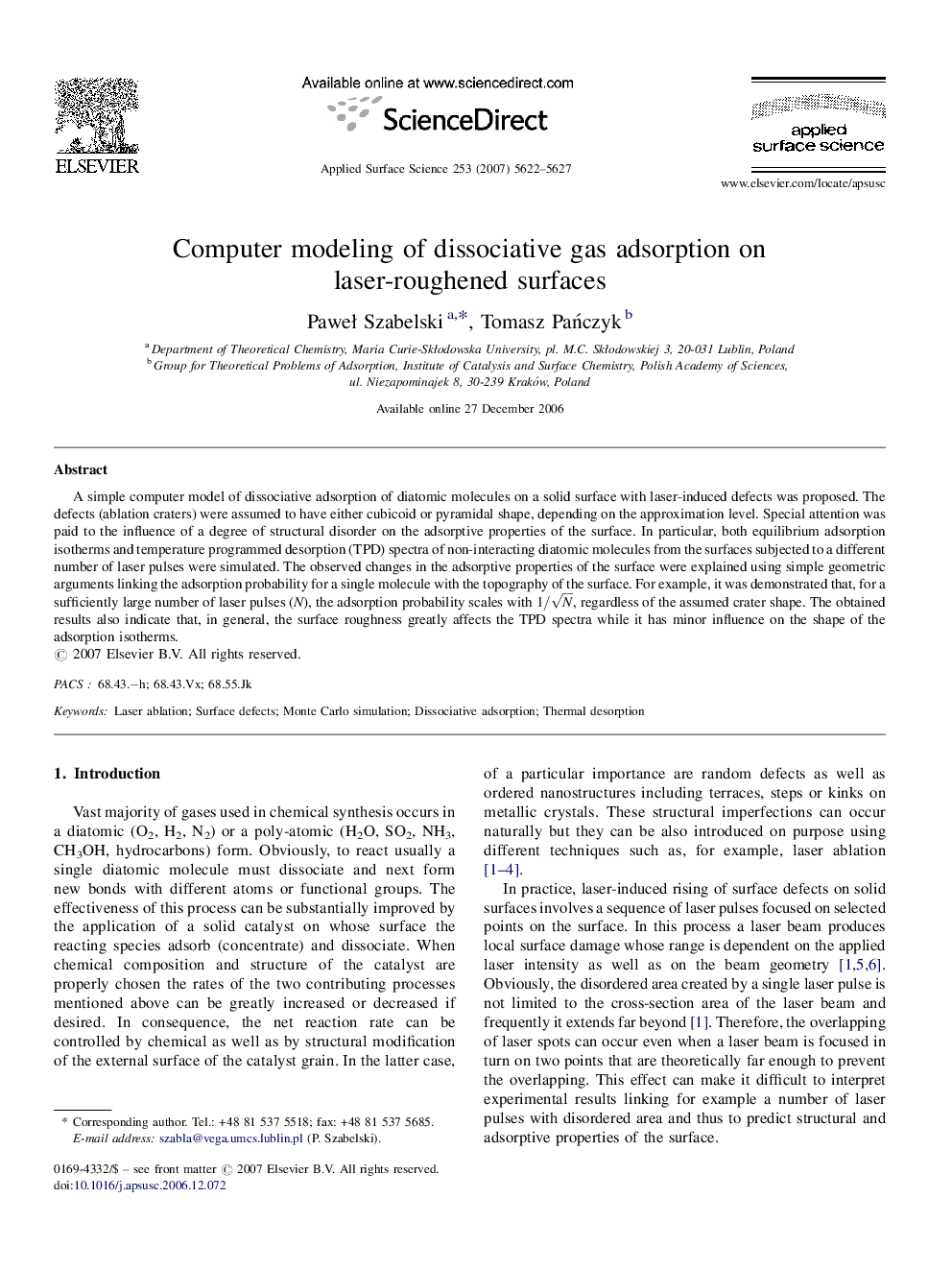| Article ID | Journal | Published Year | Pages | File Type |
|---|---|---|---|---|
| 5369713 | Applied Surface Science | 2007 | 6 Pages |
A simple computer model of dissociative adsorption of diatomic molecules on a solid surface with laser-induced defects was proposed. The defects (ablation craters) were assumed to have either cubicoid or pyramidal shape, depending on the approximation level. Special attention was paid to the influence of a degree of structural disorder on the adsorptive properties of the surface. In particular, both equilibrium adsorption isotherms and temperature programmed desorption (TPD) spectra of non-interacting diatomic molecules from the surfaces subjected to a different number of laser pulses were simulated. The observed changes in the adsorptive properties of the surface were explained using simple geometric arguments linking the adsorption probability for a single molecule with the topography of the surface. For example, it was demonstrated that, for a sufficiently large number of laser pulses (N), the adsorption probability scales with 1/N, regardless of the assumed crater shape. The obtained results also indicate that, in general, the surface roughness greatly affects the TPD spectra while it has minor influence on the shape of the adsorption isotherms.
